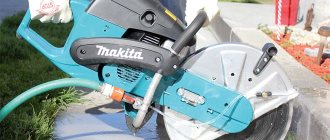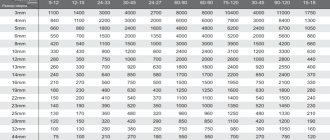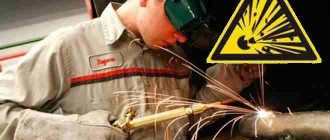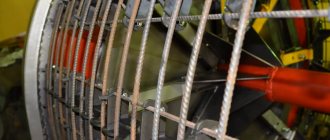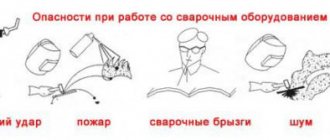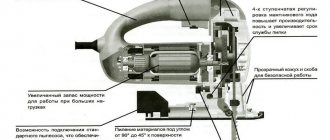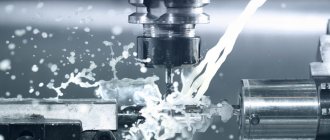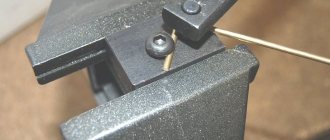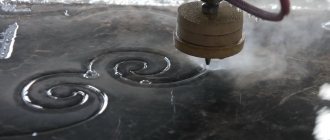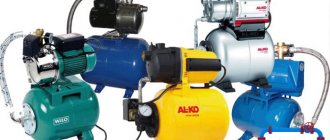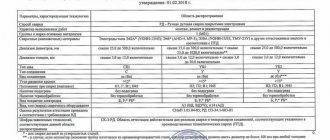Safety requirements in emergency situations.
4.1.
If voltage (feeling of current) is detected on the metal parts of the machine, the grounding wire is broken and in other emergency conditions of the machine, immediately turn off the machine and inform the foreman. 4.2. In case of electric shock, release the victim from the action of the current, while observing safety precautions. Call a doctor and, before his arrival, if the victim has trouble breathing, perform artificial respiration, and if the pulse is weak or absent, perform cardiac massage
4.3. Each accident must be reported to the site engineer and the person responsible for compliance with occupational safety requirements.
4.4. Provide first aid to the victim.
4.5. The environment in which the accident occurred should be preserved, if possible, if this does not endanger the lives of other people and operating equipment for the commission to conduct an investigation.
4.6. For minor injuries and illness, use a first aid kit, inform the technician and stop working.
Occupational safety requirements in emergency situations.
4.1. If voltage (feeling of current) is detected on the metal parts of the machine, the grounding wire is broken and in other emergency conditions of the machine, immediately turn off the machine and inform the foreman.
4.2. In case of electric shock, release the victim from the action of the current, while observing safety precautions. Call a doctor and, before his arrival, if the victim has trouble breathing, perform artificial respiration, and if the pulse is weak or absent, perform cardiac massage
4.3. Notify the site engineer and occupational safety engineer about each accident.
4.4. Provide first aid to the victim.
4.5. The environment in which the accident occurred should be preserved, if possible, if this does not endanger the lives of other people and operating equipment for the commission to conduct an investigation.
4.6. For minor injuries and illness, use a first aid kit, inform the technician and stop working.
Fixing the workpiece
When fixing a polished workpiece, place pads under the jaws of the vice.
» data-medium-file=»https://i2.wp.com/odnastroyka.ru/wp-content/uploads/2014/11/fiksacia-zagotovki.jpg?fit=352%2C352″ data-large-file= »https://i2.wp.com/odnastroyka.ru/wp-content/uploads/2014/11/fiksacia-zagotovki.jpg?fit=352%2C352″ > After marking, before drilling the metal workpiece, it is necessary to fix it in an ordinary bench vice, or in the vice of a drilling machine.
When fixing the workpiece in the vice of a drilling machine, the machine plate should be raised, thereby reducing the distance from the workpiece to the drill to 2-3 cm. Do not forget to fix the fixing screws for adjusting the height of the drilling machine plate. Otherwise, the slab may fall down during drilling. Which will lead to breakage of the twist drill, damage to the workpiece and even injury.
General safety requirements
Safety precautions when working with a PC: requirements for PCs
Accidents at enterprises where they work on special equipment are not uncommon. Even the most experienced employee can be injured if he does not follow instructions. Basic requirements for the workflow:
undergoing induction training; preliminary preparations: clothing, checking physical condition and workplace; you need to pay attention to the operation of the machine and your actions; in case of an emergency, you need to turn off the machine, and also protect yourself and others from injury; If an emergency occurs, notify your superiors, production controller or special service employee.
Important! The drilling apparatus must undergo testing. Safety requirements before starting work The machine operating manual should always be at hand so that a person can always familiarize himself with any section and make sure that his actions are correct and safe
Nuances of the preparatory process:
Safety requirements before starting work The machine operating manual should always be at hand so that a person can always familiarize himself with any section and make sure that his actions are correct and safe. Nuances of the preparatory process:
- you need to wear a special uniform. Prepare protective elements;
- First, the specialist must inspect the place where he will work all day. If something is not in order, starting work is prohibited;
- check the drilling apparatus for malfunctions;
- All buttons on clothing must be fastened, a hat, sleeves or gloves, safety glasses, and comfortable shoes must be worn;
- a person should not be distracted by foreign objects: mobile phone, music, food or drinks.
It is prohibited to work under the influence of alcohol or drugs. The machine is first started in test mode, and then the parts are processed.
Start
Induction training
Work usually begins with an introductory briefing. These rules have identical requirements (standard instructions) for many types of equipment. Basic rules and safety measures:
- Specially trained persons are allowed to work, who will undergo an introductory safety briefing and receive permission to operate the machine.
- A person allowed to work must have basic knowledge of electrical engineering and plumbing rules.
- The employee must be trained in basic safe work practices.
- A knowledge test is required, along with safety measures of course, before access to the machine.
Note: If the rules are ignored, persons who violate the requirements of operation and safe work will be subject to disciplinary liability and appropriate penalties, in accordance with the standard labor regulations at work. (The rules are the same for everyone).
SAFETY REQUIREMENTS DURING OPERATION
3.1.
During work, the driller must:
– securely and correctly fasten the workpiece so that the possibility of it flying out is excluded;
– the workpieces, vices and fixtures must be firmly and securely fastened to the table or foundation slab;
– installation and removal of heavy parts and devices must be carried out only with the help of lifting equipment;
– correctly center and securely fasten the cutting tool;
– bring the cutting tool to the workpiece smoothly, without impact;
– when manually feeding the drill and when drilling through the hole or with small drills, do not press the lever too hard;
– when changing a drill or chuck, use a wooden drift;
– when drilling holes in tough metals, use spiral drills with chip-breaking grooves;
– remove chips from the workpiece and the table only when the tool is stopped;
– do not allow the cleaner to clean the machine while it is working;
– when drilling brittle metals, if there are no chip protection devices on the machine, wear safety glasses or a safety shield made of transparent material;
– if the tool jams, the drill shank, tap or other tool breaks, turn off the machine;
– to remove chips from the machine, use special hooks and brushes. Do not remove chips directly with hands or tools;
– if vibration occurs, stop the machine. Check the drill fastening, take measures to eliminate vibration;
– before stopping the machine, be sure to remove the tool from the workpiece;
– stop the machine and turn off the electrical equipment in the following cases:
a) leaving the machine even for a short time;
b) during temporary cessation of work;
c) during a power outage;
d) when cleaning, lubricating, cleaning the machine;
e) if any malfunction is detected;
e) when tightening bolts, nuts and other fasteners.
3.2.
While working on the machine, the driller is prohibited from:
– use chucks and devices with protruding locking screws and bolts;
– hold and adjust the drilled part with your hands;
– fasten a part, fixture or tool while the machine is running;
– slow down the rotation of the spindle with your hands;
– use local lighting with voltage above 42 V;
– tighten nuts, bolts and other connecting items while the machine is running;
– cool the instrument using rags and ends;
– use the machine bed for storing any objects and tools. Core the part on the machine table;
– take and feed any objects through the machine while the machine is operating;
– use gaskets between the wrench mouth and the edges of the nuts;
– use tools with worn tapered shanks;
– work on the machine wearing mittens or gloves, as well as with bandaged fingers without rubber finger caps;
– blow compressed air from a hose onto the workpiece;
– when installing a part on a machine using a lifting crane, be between the part and the machine;
– lean on the machine during its operation and allow others to do this;
– while working, tilt your head close to the spindle and cutting tool;
– leave keys, accessories and other tools on the working machine.
Twist Drill Selection
More often, when drilling metals, we use twist drills with individual sharpening of the cutting edge. And here it is important to observe safety precautions when drilling certain parts and workpieces.
It will be better if you always have at hand a set of twist drills for both wood and metal, of various diameters and lengths.
I recently bought myself a set of drills for metal and wood. Not a lot, of course, but it was enough for my purposes. And it's quite inexpensive.
Install a twist drill of the required diameter and length into the chuck of a drill press or electric drill.
When attaching the drill, make sure that the drill is installed clearly vertically, without any distortions.
When using small-diameter twist drills ( When marking workpieces , it is necessary to establish the exact position of the center and the required dimensions of the hole. This can be determined using a marking square, a caliper or a regular ruler. To make the markings more visible, apply them with a center punch or permanent ink. The markings will fall into the drilling area and traces of it will not remain. Before drilling, it is better to mark the center of the intended hole with a center punch. This reduces the risk of the drill moving to the side.
Labor protection requirements after finishing work
When finishing work on a lathe, the specialist must:
- disconnect electrical equipment;
- clear approaches to emergency exits if they were littered during the production process;
- remove metal filings from the floor;
- put the tools in their regular storage places;
- see if there is smoke in the room;
- inform your immediate supervisor of all facts of violation of security requirements, if any;
- leave the production area.
The operation of the machine may be stopped under the following circumstances:
- absence from the unit for any period of time;
- lunch break;
- Maintenance;
- removing chips or excess lubricant from the unit body;
- installation, measurement or shooting of parts;
- preventive work;
- cleaning or checking the cutter;
- various types of faults.
Repairing the machine yourself is strictly prohibited. This is only carried out by suitably qualified persons. When carrying out repair work on the unit, special warning signs must be posted on it so that the worker does not start the machines and thereby cause injury to the people carrying out the repair work.
Upon completion of operation of the machine, it is disconnected from the power supply using the “stop” button.
The workplace is put in order, excess production and various contaminants are removed, all rubbing surfaces of the machine are lubricated, and other equipment is serviced.
Finished products are stored in specially designated places. Overalls are located in specially equipped lockers.
The employee washes his hands and face with soap and takes a shower, if such an opportunity is available at the enterprise.
It is strictly forbidden to take work equipment outside the production premises.
https://youtube.com/watch?v=TRF1vVq2lto
Safety requirements before starting work.
2.1. Before turning on the machine, make sure that starting it does not endanger anyone.
2.2. Put your work clothes in order: button up or tie up the sleeve cuffs, put on a hat.
2.3. Adjust the local lighting of the machine, the voltage of which should not be more than 42V.
2.4. Check availability and serviceability:
- fencing of live parts;
- grounding devices;
- safety devices. The fastening of the protective covers should securely hold them in place in the event of a rupture of the circle;
- ventilation device and the correct installation of the dust collector in the position best for collecting dust;
- the gap between the circle and the upper edge of the opening of the movable casing, which should be no more than 6 mm;
- the gap between the side wall of the protective casing and the flanges for fastening the circle of the greatest height used on this machine, which should be within 5-10 mm.
2.5. Prepare the abrasive wheels necessary for sharpening the tool; check the condition of these circles by external inspection (using a magnifying glass) to identify cracks and potholes.
The non-working part of the abrasive wheels must be marked with paint or a label pasted indicating the test number and date.
2.6. It is not allowed to use wheels that have cracks or potholes.
2.7. Check the reliability of fastening of the abrasive wheel, the presence of card gaskets between the protective flanges and the wheel, and the reliability of fastening of the nuts.
2.8. Securely fasten the tool rest, installing it in such a way that the upper point of contact of the product with the circle is above the horizontal plane passing through the center of the circle, but not more than 10 mm.
The gap between the edge of the tool rest and the working surface of the circle should be no more than 3 mm. There should be no potholes, chips or other defects on the edges of the tool rests on the circle side.
2.9. Check the proper operation of the machine at idle speed for circles with a diameter of up to 150 mm - at least 1 minute, over 150 to 300 mm - at least 2 minutes, over 300 mm - at least 3 minutes.
2.10. Before installing the abrasive wheel, check whether the wheel with a diameter of over 150 mm, assembled with a faceplate, has been balanced, and whether it has a certificate confirming its strength testing.
2.11. When securing the circle, it is not allowed to use attachments for wrenches or impact tools.
2.12. Place the tool issued for sharpening on a bedside table or rack, without cluttering work areas and aisles.
SAFETY REQUIREMENTS AFTER WORK COMPLETION
After completing the work, the driller must:
– turn off the machine and the electric motor;
- tidy up the workplace:
a) remove shavings and metal dust from the machine;
b) clean the machine from dirt;
c) carefully place the workpieces and tools in the designated place;
d) lubricate the rubbing parts of the machine;
– hand over the machine to a replacement or foreman and report any malfunctions of the machine;
take off your overalls and hang them in the closet. Wash your face and hands with warm water and soap or take a shower.
| Introduction. 1 1. General safety requirements. 1 2. Safety requirements before starting work... 2 3. Safety requirements during operation.. 2 4. Safety requirements in emergency situations. 3 5. Safety requirements after completion of work.. 4 |
Safety precautions
The marking made by the punch must coincide with the cutting edge of the lowered twist drill. Make sure that parts of your clothing cannot get under the rotating parts of the drilling machine, and only then turn on the machine.
The machine shutdown button should be located in an easily accessible and convenient place. Do not operate a machine with a hard-to-reach shutdown button. This is the first safety rule when working on any machine.
When drilling especially metal workpieces, one should not forget about safety precautions. Never turn on the machine without first lowering the protective transparent screen. This will protect you from getting small metal filings in your eyes.
When drilling with an electric or pneumatic drill, do not try to give the drill the maximum number of revolutions. When drilling fairly deep holes, lift the drill bit frequently to remove chips. This will extend the life of the twist drill and produce a better quality hole. And I repeat, do not forget about safety precautions in order to avoid accidents.
This concludes the article. And ahead we have a topic on thread cutting.
Occupational safety: getting started
Safety precautions are an integral part of the general rules of conduct. Taking into account the practice of operating production tools, enterprises often develop a clear algorithm of actions in the form of workplace guidelines.
How to prepare for work:
- Carefully put on special clothing, make sure there are no hanging or protruding items of equipment, and remove hair.
- According to safety requirements, sharpening of parts on a rotating wheel with a horizontal axis must be carried out provided that the machine is equipped with a special protective screen. Equipment dimensions, installation rules and other parameters are determined by technical regulations (equipment manufacturer’s manual). If, according to safety requirements, it is impossible to install stationary protection, you should buy glasses or a special visor for attaching to a headgear for working on a sharpening machine.
- Check the readiness of the machinery and equipment for work in the following sequence:
- reliability of fastening of the grounding device, protective covers and support;
- the proper condition of the grinding wheel for metal processing, make sure there is no mechanical damage;
- presence of a guard on the machine and readiness for operation;
- equipment serviceability at idle speed.
If the above malfunctions are detected, the sharpening machine operator should stop work and notify the foreman. Reuse of equipment should be allowed after measures have been taken to eliminate the above-mentioned deficiencies.
What to do in emergency situations?
General rules of conduct in such situations require immediate stoppage of work and notification of the incident to the responsible person. If the senior is not present and in the absence of repair personnel, with appropriate qualifications, the employee has the right to take measures to correct the situation in accordance with the safety instructions.
If a fire occurs, the following actions will be necessary:
- It is necessary to notify the repairman and the repair team about the incident.
- Notify the fire department of the enterprise. If it is missing, call the Ministry of Emergency Situations.
- If the fire is minor and does not pose a threat to life, you can begin to extinguish the fire yourself.
- If firefighters have been called, you need to meet them and ensure that there are no strangers at the site.
- If there is a clear threat to life, the fire site must be left immediately.
Sometimes problems can arise for those around you. If a person witnesses an accident, you need to do the following:
- It is necessary to provide first aid to the victim as quickly as possible, then call an ambulance if necessary.
- If possible, measures will need to be taken to prevent an emergency.
- In accordance with the safety instructions, you should try to keep the accident site in its original condition until specialists arrive.
Correct actions in emergency situations will preserve the health of the victim and reduce material damage.
Actions in emergency situations
In the event of an emergency, the requirements are as follows:
- immediately stopping the equipment and notifying a superior person about the malfunction;
- in the absence of repair personnel and if the machine operator has special training, take measures to eliminate the malfunction and prevent a safety hazard.
If the equipment catches fire, immediately:
- take care to notify others and the master;
- inform the security service or, in the absence of your own fire department, call 112 to the Ministry of Emergency Situations;
- if there is no threat to life, proceed with the initial fire extinguishing;
- meet the firefighting team and ensure that strangers are not allowed into the fire; equipment must be freely accessible;
- If there is a clear threat to health and life, leave the premises.
If you witness an accident
If accidents occur (even due to the fault of workers who did not comply with safety measures), follow these rules:
- provide first aid and call an ambulance if necessary;
- take measures to prevent an emergency;
- Before starting the inspection, try to keep the place of work in its original emergency condition, as it was before the incident.
When you finish work, do not immediately leave your workplace, be sure to remember:
- disconnect the power supply to the machine;
- put the tool in its designated place;
- remove debris (chips) only with a brush with a tag;
- take off and put away the protective clothing, do not throw it everywhere;
- lubricate machine parts if necessary;
- inspect the machine and if any deficiencies or malfunctions are found, notify the repair personnel or the person in charge.
By following these requirements (safe work practices) on the machine, essentially a set of rules for operating a drilling machine, you will protect yourself and others from work-related injuries.
Remember: you cannot start work without making sure it is safe and without knowing the basic principles and safety precautions. Do not be a non-performing and unscrupulous employee, know that the instructions were written to avoid injuries and force majeure circumstances.
Ready instructions
Download safety instructions when working on drilling machines
How to care for the machine?
Safe operation can only be ensured with properly functioning equipment. To do this, the machine must be maintained. After working on it, cleaning is required. The spindle is lubricated with grease once every three months.
It must be remembered that even with proper use, parts will wear out. Therefore, it is necessary to monitor their condition and change them if necessary. Practice shows that the cartridge and transmission belt wear out first, which is associated with the significant loads they experience. Failure to replace it promptly may result in poor performance or injury.
Drilling the workpiece
Using the levers located on the body of the drilling machine, move the drill evenly towards the workpiece.
Some machines are equipped with a liquid/oil supply to the drill to avoid overheating and breakage of the drill, as well as fusion of the edges of the workpiece (if it is plastic). In this case, you need to ensure the correct supply of fluid to the drill/drilling point.
In any case, even if the machine is not equipped with an automatic fluid supply system, it will not be superfluous to cool the drill , including when working with a hand drill. This can be done by periodically pouring water from a bottle on it, or by lowering the end of the drill into a container of water.
Supply of cooling oil to the drill
GENERAL OCCUPATIONAL SAFETY REQUIREMENTS
1.1. Workers over 18 years of age who have undergone a medical examination, introductory briefing on labor protection upon hiring and initial briefing at the workplace, as well as repeated and, if necessary, unscheduled and targeted briefings on labor protection, who have mastered safe techniques, are allowed to work with drilling tools performance of work and passed the knowledge test of labor protection requirements. 1.2. Employees allowed to perform work must comply with the internal regulations established by the organization. 1.3. When working with a drilling tool, you should follow a work and rest schedule. Relaxing and smoking are allowed in specially equipped places. 1.4. Drilling tools must be assigned to workers for individual or team use, placed in special tool cabinets, tables located next to or inside the equipment, if this is convenient, safe and provided for by the design. 1.5. Workers are required to perform only the work assigned by the work manager. It is not allowed to delegate your work to other employees and allow unauthorized persons into the workplace. 1.6. A worker may be exposed to hazardous and harmful production factors: - noise, - vibration, - unfavorable parameters of the production microclimate, - electric current, - gas and dust levels. 1.7. Workwear, special footwear and other personal protective equipment are issued to employees in accordance with current standards and the work performed. 1.8. Workwear, safety shoes and other personal protective equipment should be stored in specially designated areas in compliance with storage rules and used in good condition. 1.9. Workers performing work with drilling tools must comply with fire safety rules, know fire warning signals, the location of fire extinguishing equipment and be able to use them. It is not allowed to use fire-fighting equipment for business purposes, or to obstruct passages and access to fire-fighting equipment. 1.10. In the event of an accident, the victim should stop working, notify the work manager and seek medical help. 1.11. Workers who work with drilling tools need to know and observe the rules of personal hygiene. 1.12. If any questions arise during the work related to its safe performance, you should contact the employee responsible for the safe performance of work. 1.13. Employees who violate the requirements of this instruction are liable in accordance with the current legislation of the Russian Federation.
Instructions for labor protection when working on a vertical drilling machine
1. General labor protection requirements
1.1. This instruction is compiled on the basis of standard labor protection instructions for a general-purpose machine operator, turner, milling machine operator, grinder, polisher, sharpener (TOI R-31-204-97).
1.2. The labor protection requirements set out in the labor protection instructions when working on a vertical drilling machine apply to persons performing metal processing on metal-cutting machines (lathes, drilling and boring machines, milling machines, planing machines, slotting machines, broaching machines, gear cutting machines, cutting machines, grinding machines), as well as those combining other professions with the professions of a turner, milling machine, gear cutter, grinder, insulator, sharpener (wide-profile machine operator).
1.3. Persons at least 18 years of age who have passed a medical examination, have the appropriate profession, qualification category, and have been instructed and trained in safe methods of performing work are allowed to perform the metal cutting process.
1.4. Occupational safety briefing and occupational safety training are mandatory for all employees and new employees, including those undergoing practical training.
1.5. When performing work, a machine operator may come into contact with dangerous and harmful production factors. A HAZARDOUS production factor is a factor whose impact on a worker, under certain conditions, can lead to injury or a sudden deterioration in health, HARMFUL - to a decrease in performance or illness.
1.6. When working on drilling machines, exposure to the following dangerous and harmful production factors is possible:
- increased voltage in an electrical circuit, the closure of which can occur through the human body;
— chips and fragments of metal with elevated surface temperatures that rebound during processing;
— high surface temperature of processed parts and tools;
— increased level of vibration and noise;
— small chips and aerosols of lubricant and coolant;
— moving and rotating parts of the machine, moving products, workpieces, materials;
— insufficient illumination of the working area, the presence of direct and reflected glare.
1.7. When performing work, in accordance with the type of dangerous and harmful production factors, the employee is obliged to use personal protective equipment (working clothing, safety shoes and safety devices: goggles, respirator, headphones, etc.) with mandatory adherence to personal hygiene rules.
1.8. When heavy cooling with emulsions, oils, turpentine, and kerosene is used on machines, workers are given protective pastes.
1.9. Along with the requirements of the labor safety instructions when working on a vertical drilling machine, the machine operator must comply with:
— requirements set out in the tariff and qualification characteristics for the level of theoretical and practical knowledge of a worker with appropriate qualifications;
— technological process of the work performed;
— rules for the technical operation of equipment, devices, tools with which it works or which it services;
— internal labor regulations.
1.10. When performing assigned work, the machine operator must not leave his workplace without the permission of the manager or take part in the production of work not assigned to him. Smoking and eating are not allowed during work.
1.11. If the floor is slippery (drenched in oil, emulsion), the worker must demand that it be sprinkled with sawdust, or do it himself.
1.12. The weight of the load when carried manually on a flat surface should not exceed: for men - 20 kg, for women - 10 kg, for boys from 16 to 18 years old - 16 kg. In other cases, the cargo must be moved using mechanisms and devices. Work on installing parts, fixtures, and tools weighing more than 20 kg on machines, presses, and transport devices must be mechanized.
1.13. When working on a drilling machine, an employee is prohibited from:
- work in the absence of a wooden grid on the floor under your feet along the length of the machine, which prevents shoes from getting between the slats and ensures the free passage of chips;
- work on the machine with a broken ground wire, as well as in the absence or malfunction of locking devices;
- stand and walk under a raised load;
— pass in places not intended for the passage of people;
— enter the fences of technological equipment without permission;
— remove barriers to hazardous areas of operating equipment;
- wash your hands in emulsion, oil, kerosene and wipe them with wiping tips contaminated with shavings.
1.14. It is prohibited to use tools, devices, or work on equipment that the employee has not been trained or instructed to use.
1.15. In cases of injury or illness, you must stop work, notify the work manager and contact a medical facility.
1.16. All noticed malfunctions of machines, equipment and devices must be immediately reported to the head of the department.
1.17. For violation of the requirements of these instructions, the machine operator is responsible in accordance with the current legislation of the Russian Federation.
2. Labor protection requirements before starting work
2.1. When performing dangerous and rarely performed work, the machine operator must receive targeted instruction on labor safety from the supervisor.
2.2. Before starting work, it is necessary to put your work clothes in order, tuck your hair under your headdress, prepare the necessary tools, a hook for removing chips, safety devices (glasses, headphones, a respirator), inspect the machine equipment, lifting equipment and tools, determine their serviceability and readiness for use.
2.3. The workplace must be clean and sufficiently lit, aisles and areas near machine equipment must be free of tools, parts and consumables. Tooling, blanks, finished parts and production waste must be located on special racks, tables, and containers.
2.4. To work while sitting, the workplace must have a chair (seat) with adjustable height and backrest tilt. Near the machine on the floor there must be serviceable wooden gratings (flooring) for the entire length of the working area and a width of at least 0.6 m. Special platforms, footboards, steps, ladders intended for access to high-lying machine controls must be in good working order and securely fastened .
2.5. Machine tools and workbenches should be equipped with low-voltage lighting. When using fluorescent lighting on machines, protection of operating personnel must be ensured from the stroboscopic effect appearing on the moving parts of the machine.
2.6. Before starting the machine, it is necessary to check the presence and serviceability of:
— guards of gear wheels, drive belts, rollers, drives, etc., as well as live parts of equipment (starters, switches, etc.). Folding, sliding and removable barriers must be kept from spontaneous movement;
— grounding devices;
— safety devices for protection against chips and coolants. Hoses supplying coolant must be placed so that they cannot come into contact with the cutting tool and moving parts of the machine;
— devices for tool fastening (no cracks, fastening strength of hard alloy plates, chip breaking thresholds, etc.).
2.7. The machine operator must ensure sufficient lubrication of the machine, using special devices, check the correct operation of the locking devices and make sure that there are no foreign objects on the machine.
2.8. When turning on the machine at idle, check:
— serviceability of controls (mechanisms of main movement, feed, start, stop movement, etc.);
— serviceability of the lubrication and cooling system;
— the serviceability of fixing the switching and switching levers (the possibility of spontaneous switching must be excluded);
— whether there are any jams or excessive slack in the moving parts of the machine (in the spindle, in the longitudinal and transverse slides of the support).
2.9. Cutting, measuring, fastening tools and accessories should be laid out in an order convenient for use. It is allowed to work only with working tools and devices and use them strictly for their intended purpose.
2.10. The cutting tool must be properly sharpened, the shanks and seats must not be damaged or deformed.
2.11. Wrenches must have a mouth that matches the size of the nuts, bolt heads, and be free of cracks, gouges and burrs. The jaws of the keys must be parallel. Sliding keys should not have excessive slack in the moving parts. It is not allowed to use wrenches, placing plates between the nuts and the wrench, or to extend the handles of the wrenches using another wrench, pipes, or other objects.
2.12. Hand tools for cutting and punching metal (chisels, crosscutters, bits, notches, etc.) must meet the following requirements:
— the cutting edge must not be damaged; the side edges in places where the tool is supported by hands should not have sharp edges, burrs or cracks;
- the length of the tool must be at least 150 mm, the length of the center punch - 100 mm.
2.13. Files, rasps, scrapers, hammers must be firmly attached to wooden handles.
2.14. Abrasive wheels must be securely fastened and free from cracks and gouges. Between the circle and the clamping flanges, gaskets with a thickness of 0.5 - 1 mm are required. The gap between the abrasive wheel and the tool rest should be no more than 3 mm.
2.15. It is prohibited to work on faulty equipment, use faulty tools, or independently carry out repairs to machines and equipment that are not provided for by the worker’s qualifications.
3. Labor protection requirements during work
3.1. Safety requirements must be met throughout the entire technological process, including operations of technical control, transportation, storage of processing objects and removal of production waste.
3.2. Technological processes associated with the danger of explosion and fire must be carried out in compliance with special additional requirements (processing of beryllium, its alloys, titanium, magnesium alloys, etc.).
3.3. It is prohibited to work on machine tools, automatic lines and other metalworking mechanisms in the absence or malfunction of the machine starting blocking devices with protective guards for gear, belt, chain drives, and gearboxes. When performing work, it is strictly prohibited to violate the requirements of the labor protection instructions when working on a vertical drilling machine.
3.4. It is not allowed to work on machines wearing mittens or gloves, as well as with bandaged fingers without finger caps.
3.5. Before installing the part on the machine, it is necessary to wipe it and the surface of the fastening devices.
3.6. The cutting tool can be installed and removed only after the machine has completely stopped.
3.7. When securing several workpieces at the same time, they must be clamped evenly.
3.8. The movements of the handles when clamping and squeezing the product should not be directed towards the tool.
3.9. When cutting workpieces that extend beyond the equipment, portable guards and safety signs must be installed.
3.10. When processing parts, you should use the cutting modes specified in the operating chart for this part. You cannot increase the set cutting modes without the knowledge of the master.
3.11. While the machine is operating, you must not take or feed any objects through the operating machine, or tighten bolts, nuts and other connecting parts of the machine.
3.12. Manual checking of the dimensions of workpieces and removal of parts for inspection should be carried out only when the mechanisms for rotating or moving workpieces, tools, and devices are turned off. During the operation of machines and mechanisms, checking the dimensions of parts should be carried out by automatically operating instrumentation or special devices.
3.13. It is prohibited to cool cutting tools with wet rags or brushes.
3.14. On metal-cutting machines that have devices for cooling the cutting tool with a freely falling jet (watering) or sprayed liquid that produces harmful aerosols, gas receivers must be equipped to remove these aerosols directly from the place of their formation. Do not operate machines and mechanisms when coolant or oil is splashing or spreading onto the floor. Shields must be installed to protect against splashes.
3.15. It is prohibited to work on metalworking machines in the absence or malfunction of screens and fences protecting workers from flying chips and metal particles.
3.16. If the machines are not equipped with protective devices (screens) by design, it is necessary to use safety glasses. When processing brittle metals (cast iron, bronze, brass), as well as plastics and textolite, which produce flying chips, and when crushing steel chips during the processing process, dust collectors (suction units) must be used to remove dust and chips from the place of their formation. When processing tough metals that produce continuous chips, it is necessary to use cutters with special chip breaking devices.
3.17. The machine operator must ensure the timely removal of chips from the workplace and the machine, do not allow the chips to wrap around the workpiece or cutter, and do not direct the curling chips towards themselves. To remove chips, you must use brushes, hooks and tassels with wooden handles at least 250 mm long. It is forbidden to remove chips directly with your hands, or use random tools or hooks with a handle in the form of a loop.
3.18. If vibration occurs, you must stop the machine and take measures to eliminate it, check the fastening of the cutter and the part.
3.19. The machine operator must stop the machine and turn off the electric motor when:
- leaving the machine even for a short time;
— temporary cessation of work;
— interruption in the supply of electricity;
— cleaning, lubricating, cleaning the machine;
— detecting a malfunction in equipment;
— tightening bolts, nuts and other connecting parts of the machine;
— installation, measurement and removal of parts;
— checking or cleaning the cutting edge of the cutter;
— removing and putting on belts on machine pulleys.
3.20. Workers are allowed to carry out work using lifting machines controlled from the floor and hanging loads on the hook of these machines after instruction and testing of skills in operating machines and securing loads.
3.21. It is not allowed to wash your hands in oil, emulsion, kerosene, or wipe them with wiping tips contaminated with shavings.
3.22. When preparing solutions of powdered and granular detergents for flushing cooling systems, workers must use masks or respirators.
3.23. Released containers and packaging materials must be promptly removed from workplaces to places designated for this purpose.
3.24. Wiping material (rags) is stored in a special, tightly closed metal container in specially designated areas. As used cleaning materials accumulate, but at least once per shift, the containers must be cleaned.
3.25. Storage and transportation of coolant should be carried out in clean steel barrels, cans, cans, as well as in containers made of tinplate or plastic.
3.26. Workplaces must be cleaned of chips and dust in a manner that prevents dust formation. It is not allowed to blow compressed air onto the surface being processed and the machine.
3.27. When repairing the machine, a sign must be posted on the control panel with the inscription “DO NOT TURN ON! REPAIR".
3.28. Labor protection requirements when working on drilling machines.
3.28.1. When working on drilling machines, the following safety requirements must be met:
— before starting work, you must check that the devices for securing the working tool provide reliable clamping, accurate centering of the tool and do not have protruding parts (cams, screws, wedges, strips). If this requirement cannot be met, the protruding parts must be covered with smooth covers;
— multi-spindle drilling machines must be equipped with a device for separately starting and turning off each spindle. If one spindle is used in a job, the others must be turned off;
— vertical drilling, radial drilling, jig drilling machines must have working devices that prevent spontaneous lowering of the traverse, trunk, bracket. It is prohibited to work on machines that do not meet the specified requirements.
3.28.2. Installation of cutting tools is carried out when the machine is completely stopped, and it is necessary to ensure the reliability and strength of their fastening and correct alignment. When changing tools, the spindle must be lowered. When replacing tools on multi-spindle heads, special stands must be used to prevent the head from falling.
3.28.3. The workpieces, vises and fixtures on drilling machines must be securely fastened to the table or foundation plate. Fastening is carried out with special fasteners: bolts corresponding to the table groove, clamping strips, stops, etc. The vice must be in good working order, and the notches on its jaws must not be worn.
3.28.4. Installation of parts on the machine and their removal from the machine is carried out when the spindle with the cutting tool is in its original position, except for machines equipped with a special multi-place device that ensures loading of the part outside the working area.
3.28.5. The cutting tool must be brought to the workpiece smoothly, without impact.
3.28.6. If the chuck is loosened, or if the part rotates on the table along with the drill, you should immediately stop the machine and make the necessary fastening.
3.28.7. If a tool jams or a drill shank, tap, or other tool breaks, the machine must be turned off immediately. When replacing a chuck or drill, a wooden drift is used.
3.28.8. When drilling on machines where there are no chip protection devices, you must use safety glasses or a safety shield made of transparent material.
3.28.9. When drilling deep holes, you should periodically remove the drill from the hole to remove chips.
3.28.10. When drilling holes in tough metals, spiral drills with chip-breaking grooves should be used.
3.28.11. Chips can be removed from the workpiece and from the table only when the tool is stopped.
3.28.12.Before stopping the machine, you must remove the tool from the workpiece.
3.28.13. When working on drilling machines, it is prohibited:
- process parts that are not secured in the appropriate devices (vises, jigs), hold the parts with your hands while the machine is operating;
— installation and removal of workpieces while the machine is operating (if there are no special positioning devices);
— lean close to the spindle and cutting tool;
- use tools with clogged or worn cones and shanks on machines;
- stop the machine by pressing your hand on the spindle or chuck, touch the drill until the machine stops completely.
4. Occupational safety requirements in emergency situations
4.1. In the event of a fire, equipment breakdown or other emergency situations, the employee must:
- stop work,
- turn off the machine,
— immediately inform the workshop manager about the incident and, if necessary, call the control room;
- use primary fire extinguishing means, if this does not threaten life, otherwise proceed to evacuate people from the danger zone, leave the danger zone yourself,
— ensure the safety of the emergency situation or accident, if this does not pose a danger to the life and health of people and does not lead to aggravation of the emergency situation.
4.2. In case of an accident at work:
— inform the head of the unit, the dispatcher;
— organize first aid to the victim and, if necessary, transport him to a medical organization;
— take urgent measures to prevent the development of an emergency or other emergency situation and the impact of traumatic factors on other persons;
- before the investigation of the accident begins, preserve the situation as it was at the time of the incident, if this does not threaten the life and health of other persons and does not lead to a catastrophe, accident or other emergency circumstances, and if it is impossible to preserve it, record the current situation (compile schemes, carry out other activities).
5. Labor protection requirements upon completion of work
5.1. Upon completion of work, the machine operator must:
- turn off the equipment, tidy up the workplace, remove chips, tools, accessories from the machine, clean the machine from dirt, wipe and lubricate the rubbing parts of the machine, put finished products, workpieces, other materials and personal protective equipment in the places allocated for them;
— put workwear and safety shoes in a personal closet for workwear, and if they are dirty, put them in the wash (replace);
- Wash your hands and face with soap and water or take a shower.
Similar articles:
- Instructions for labor protection when working with hand-held electric tools Instructions for labor protection when working with hand-held electric tools 1. General labor protection requirements 1.1. To work with manual electric...
- Instructions for labor protection when working with a megaohmmeter Instructions for labor protection when working with a megaohmmeter 1. General labor protection requirements 1.1. This manual has been developed based on the standard…
- Instructions for labor protection when working with a blowtorch Instructions for labor protection when working with a blowtorch 1. General labor protection requirements 1.1. The blowtorch is designed for…
GENERAL OCCUPATIONAL SAFETY REQUIREMENTS
1.1. Individuals who are at least 18 years of age, fit for health reasons and have completed: - introductory training are allowed to work independently on a drilling machine; — introductory training on fire safety; — initial instruction on labor protection in the workplace; — training in safe labor methods and techniques; — testing knowledge of labor protection requirements; — training and testing of knowledge on electrical safety for the appropriate group, as operational and repair personnel when performing work related to the operation of electrical equipment; — training on fire-technical minimum. 1.2. Employees have the right to perform only the work that is assigned to them and that corresponds to their specialty. In necessary cases (unfamiliar work, lack of knowledge of safe work practices, etc.), workers must obtain an explanation and demonstration of safe work practices and methods from the work manager. 1.3. When working together with other workers, you should coordinate your actions and ensure that they do not lead to injury to anyone. 1.4. During work, employees should not be distracted themselves or distract other employees from their work. 1.5. Workers should not turn on or stop (except in emergency cases) machines, machines and mechanisms that they are not assigned to operate. 1.6. Employees are required to comply with the requirements of the Internal Labor Regulations. Drinking alcoholic beverages at the enterprise and appearing at work while intoxicated is prohibited. Smoking should only be done in designated areas. 1.7. It is not allowed to obstruct the approaches to panels with fire-fighting equipment and to fire hydrants. The use of fire-fighting equipment for purposes other than its intended purpose is not permitted. 1.8. The main dangerous and harmful production factors can be: - electric current; — moving and rotating parts of the machine; — small chips, flying pieces of metal and aerosols of cutting fluid; — high surface temperature of processed parts and products; — industrial dust; — production noise; — sharp edges and roughness of materials and tools; — increased vibration; — insufficient illumination of the working area, the presence of direct and reflected glare, increased pulsation of the light flux. 1.9. Based on the approved list of personal protective equipment (hereinafter referred to as PPE) issued at the enterprise, employees are provided with the prescribed PPE free of charge. 1.10. Employees are required to immediately notify their immediate supervisor of any accident or breakdown. 1.11. The requirements of this instruction are mandatory. Failure to comply with these requirements by employees is considered a violation of labor and production discipline. 1.12. Monitoring the implementation of the measures set out in these instructions, as well as compliance with the requirements of labor protection, industrial safety, electrical safety, fire safety and industrial sanitation, is carried out by the employees by their immediate supervisor.
Lesson: “The design and principle of operation of a drilling machine. TB rules."
How to organize distance learning during quarantine?
The Infourok project helps
Lesson No. ___;___ Date:__________;___________
Topic:
Design and principle of operation of a drilling machine.
Rules for safe work on a drilling machine.
Goals
: teach techniques for drilling products, introduce students to the structure and purpose of a drilling machine, give an understanding of belt and rack and pinion drives; develop precision and accuracy in work activities, memory, thinking, expand polytechnic horizons and expand the scientific understanding of the world around us; To instill in students responsibility, care and compliance with safety rules.
Forms of work:
individual;
frontal _
I. Organizational moment.
II. Updating basic knowledge.
1. What technological process is called cutting?
2. What general principle underlies the operation of cutting tools?
3. What cutting tools are used in woodworking to make products?
III. Learning new material.
One of the types of cutting is drilling wood, metal and other structural materials. It is performed using drills of different designs (Fig. 71)
However, what they all have in common is that they all have three main parts: cutting, working
and
fastening
(Fig. 72). The diameter of the drill and the grade of steel from which it is made are indicated on the fastening part.
The cutting part of the twist drill has two wedge-shaped cutting edges (Fig. 73, a
).
Going deeper into the wood, the cutting edges cut off a certain layer of it. Between them along the working surface there are screw grooves (Fig. 73, b
), with the help of which the cut wood particles are removed to the surface of the workpiece in the form of chips (Fig. 74).
The working part of the drill has two spiral bands designed to guide the drill along the hole and reduce friction against the walls. Its fastening part, the shank, serves to secure the drill in a specific device or mechanism.
Mechanical and electrified tools are used to rotate the drill. The most convenient of hand tools are the brace
and
drill
(Fig. 75).
By rotating the handle of a brace or drill, the drill is given a rotational movement, and by pressing the stop, a translational movement is imparted. Due to these two movements, the cut particles of material in the form of chips come out to the surface of the workpiece.
It is convenient and quick to drill holes on a drilling machine. A drilling machine is a technological machine. Technological machines are designed for processing various materials. Like any technological machine, a drilling machine consists of three main parts: a motor, a transmission mechanism and an actuator (Fig.).
Rice. Drilling machine:
1 — base (bed); 2 - desktop; 3 - drill; 4 - cartridge; 5 - working shaft; 6 — drill feed handle; 7 — drilling depth scale; 8 — pulley with belt; 9 — protective casing; 10 - electric motor; 11 - column; 12 — stopper; 13 - start buttons
When starting to work on the machine, it is inspected and checked for serviceability. A drill of the required diameter is inserted into the chuck and secured with a special key. The drill must be clamped straight into the chuck, without distortion. A workpiece is attached to the work table, on which the center of the future hole is marked. The “Start” button turns on the electric motor, which rotates the working element (spindle with chuck and drill) through a belt drive. By turning the handle, the spindle (working shaft) with the drill is fed to the workpiece. The drilling depth is measured on a scale from the moment drilling begins. After drilling the hole, the drill is raised. The machine is turned off.
Large workpieces are held with the left hand when drilling, and small ones are held in pliers or a vice.
At enterprises, drillers or CNC (computer numerical control) machine operators work on drilling machines.
Safety instructions for working on a drilling machine
Instructions
safety precautions when working on a drilling machine
Students who know the structure of the machine and have passed the safety test are allowed to work on machines.
Before starting work:
- Put work clothes in order;
- Inspect and prepare cutting tools for use;
- Check for grounding;
- Check the serviceability of the machine, the presence and serviceability of the fence;
- Check the machine at idle speed, make sure that the controls are in good working order, and the starting box is working properly.
- Securely secure the drill in the chuck.
- Firmly secure the part in a hand or machine vice.
During operation:
- After the machine spindle has reached full speed, the drill and parts are fed smoothly, without effort or jerking;
- To avoid injury while operating the machine, DO NOT:
- tilt your head close to the drill;
- carry out work wearing mittens;
- placing foreign objects on the machine bed;
- move away from the machine without turning it off;
- lubricate or cool the drill with snow or wet rags;
- Brake the chuck or drill with your hands.
- If the power supply stops, turn off the motor IMMEDIATELY.
- Before stopping the machine, it is necessary to move the drill away from the part, and then turn off the motor.
Upon completion of work:
- After stopping the rotation of the drill, remove the chips from the machine using a brush. In the grooves of the machine table, the chips are removed with a metal hook. Do not blow away chips with your mouth or sweep them with your hand;
- Separate the drill from the chuck and hand over the machine to the duty officer or teacher.
Supervision over the implementation of the instructions is assigned to the circle leader!
Preparing for work
When drilling metal, we use twist drills with individual sharpening
» data-medium-file=»https://odnastroyka.ru/wp-content/uploads/2014/11/sverlenie-metalla.jpg» data-large-file=»https://odnastroyka.ru/wp-content /uploads/2014/11/sverlenie-metalla.jpg" class="lazy lazy-hidden alignright wp-image-630″ title="Safety precautions when drilling metal" src="https://odnastroyka.ru/wp-content /plugins/a3-lazy-load/assets/images/lazy_placeholder.gif" data-lazy-type="image" data-src="https://odnastroyka.ru/wp-content/uploads/2014/11/sverlenie -metalla.jpg" alt="drilling of metals" width="300″ height="300″ srcset="" data-srcset="https://odnastroyka.ru/wp-content/uploads/2014/11/sverlenie- metalla.jpg 352w, https://odnastroyka.ru/wp-content/uploads/2014/11/sverlenie-metalla-350×350.jpg 350w" sizes="(max-width: 300px) 100vw, 300px" />
First, pay attention to your clothes. If you work in a robe, the sleeves of which do not have fastening cuffs, put on the sleeves and a beret on your head (or tie it with a scarf). Don't forget about safety glasses and safety shoes.
Now you can start preparing the workplace. Before you start drilling, make sure the equipment is in good working order. The check is carried out at idle speed. If no problems are found at this stage, lubricate all machine mechanisms and close the lubrication holes.
The table is wiped with a rag and immediately removed from the work area (especially from rotating elements).
Attention: The drive belts must be covered with covers, and the machine itself must be grounded.
The safety of working on drilling machines depends on the order in the workplace. Remove chips from the machine in a timely manner and store the parts in a place designated for this purpose.
